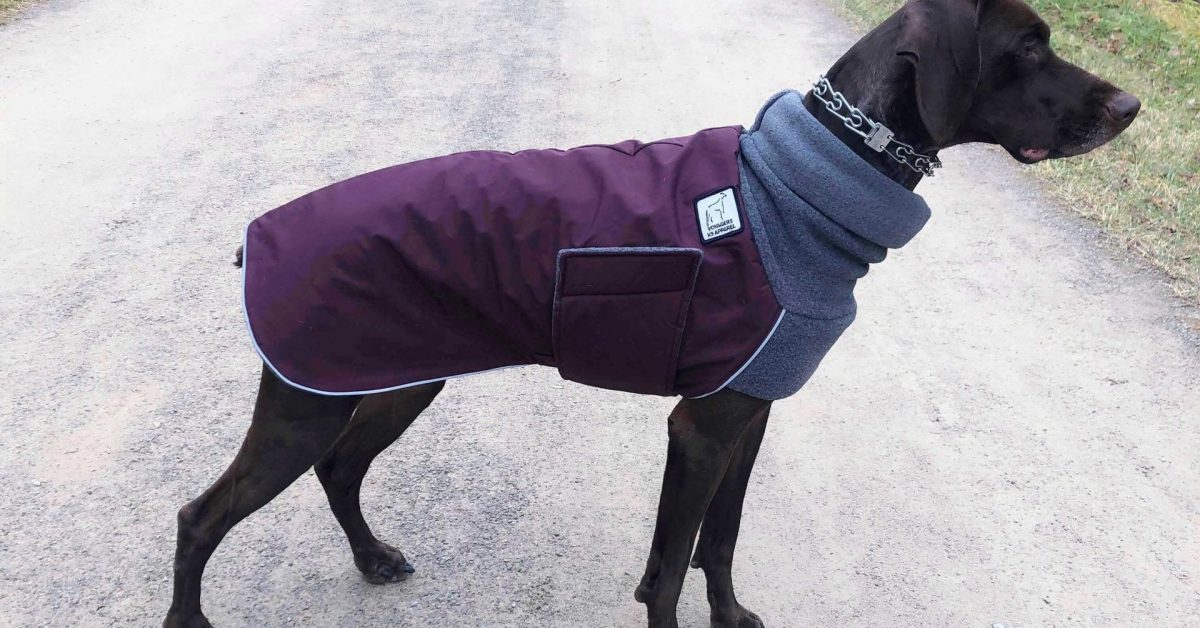
5 Things to Consider Before Buying Your Dog a Sweater or Coat
Dog clothes. It seems these days that you can dress your dog to fit any occasion.
This sparks a question though, do dogs really need to wear clothes? I mean, they have lots of fur covering their entire body, right? Surely they are warm enough on their own.
The answer can be a little complicated.
Dogs were bred for many different purposes throughout history- hunting, sledding, tracking, protecting, the list goes on and on.
As a result, a dog’s coat is meant to protect and keep him safe, depending on his environment and the work he was bred for.
For example:
Huskies and St. Bernards have thick double coats to help keep them warm in frigid and snowy conditions. On the other hand, Chihuahuas and Australian cattle dogs have very short coats to keep them cooler in warmer climates.
When dogs are transplanted from their natural climate to one with foreign temperatures, they may need additional support from a coat or sweater to accommodate their new environment.
Dogs That May Need Coats or Sweaters
If you live in a climate that gets cold in the winter months, consider the following to determine if you should invest in a fluffy sweater for fido.
Consider your dog’s size and breed.
Dogs that are larger or are meant for the cold weather like Huskies, Malamutes, or Bernese Mountain Dogs won’t need a sweater or coat. Probably a good thing because you’d have difficulty finding one to fit their size.
What is the temperature or weather condition outside?
If the temperature is 45 degrees Fahrenheit, you’re good to go no matter your pup’s breed. When temps drop below 45 degrees Fahrenheit AND your dog is outside LONGER than just going potty, you may want to investigate further if your pup needs a garment.
Puppies, small dogs, toy breeds, and shorthair breeds may need a sweater when going outside in snow and ice.
Smaller pups are poor at generating and maintaining their own body heat. So if you’ll be going for a long walk in the cold with your Yorkie, then you may want to bundle him up before your outing.
Dogs that are low to the ground.
This category would include dogs like Corgis, Basset Hounds, and Dachshunds. Short dogs risk brushing their bellies against deep snow and ice when outside. This can cause them to have a lower body temperature and need a little extra protection when going for a romp in the snow.
Lean bodied Dogs.
Examples would be Greyhounds or Whippets. Leaner bodied dogs don’t have as much body fat to keep them warm in the colder months and certainly would benefit from a coat or sweater’s added warmth.
Senior Dogs.
As dogs get older, the ability to regulate their body temperature decreases. Senior dogs are also at greater risk for arthritis. And, well, heat makes sore, achy joints feel better, so a sweater may be appropriate for them. Some medical conditions in senior dogs, such as Cushing’s disease or hypothyroidism, impact heat regulation and body hair growth, making older dogs a great candidate for a coat or sweater.
What Kind of Coat or Sweater Is Best?
You’ve read the above points and determined that your dog falls into the category of needing a coat. Next, you’ll want to hit the pet store or an online vendor to find the perfect accessory for your pet.
Ideally, you want a garment that protects the neck and belly, and doesn’t restrict movement. It’s important to make sure that the coat or sweater stops at your pup’s waist so that potty breaks don’t end in a giant mess. An accurate measurement of your dog’s neck, chest, and distance from their chest to their waist will help ensure a proper fit.
A wool or cotton/wool/acrylic blend will work well for most pups going for a walk around the neighborhood in the cold. If hiking, hunting, and sledding, or extended winter play are on the agenda, then you may want to invest in a waterproof coat to help keep them dry and warm.
A coat that is easily put on without much fuss is also a bonus, especially if your pup isn’t overly fond of their new overcoat. Watch out for coats and sweaters with lots of buttons or zippers as your dog could chew on and potentially swallow them.
Final Thoughts
Not all dogs need an extra layer to keep them warm in the winter months. But some smaller, thinner, and shorter coated dogs may. Determining if your pup needs a coat should depend on the temperature outside, how long he’ll be out, and his breed and coat type. Either way, it is essential to remove the coat when your pup comes into the house to avoid overheating in a warm home.
While not every dog would benefit from a coat or sweater, most would benefit from booties on their paws. Watching your pup try to walk in shoes can be hilarious, but they really do work to protect their delicate pads from the cold, slipping on ice, road salt, and antifreeze.
If your furry friend is stylin in a coat, sweater, or booties, share the pictures with us!
You can find us on Instagram @SitMeansSitpgh or Facebook @SitMeansSitpittsburgh.
